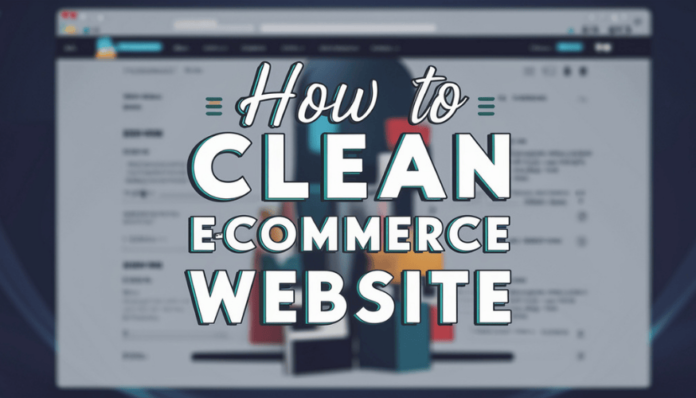Running an e-commerce website is exciting, but it’s not without challenges. Over time, your online store can become cluttered with outdated information, slow-loading pages, and duplicate content. If ignored, these issues can frustrate shoppers and hurt your conversion rates.
Cleaning your e-commerce website is like giving your store a makeover. It ensures smooth navigation, accurate product information, and a seamless shopping experience. In this guide, through simple way How to clean ecommerce website, actionable steps to declutter your website
See more : wd easystore vs elements
Why Keeping a Clean E-commerce Website Matters
Your e-commerce platform isn’t just a collection of pages; it’s the face of your business. A messy site makes visitors less likely to make a purchase. Here’s why a clean site is critical:
- Improved User Experience (UX): Visitors stay longer when navigation is intuitive and content is easy to read.
- Higher Conversion Rates: A well-maintained site encourages shoppers to complete their purchases.
- SEO Performance: Search engines favor organized websites with fresh, accurate content.
9 Step How to clean ecommerce website
Think of your website as a physical store. If shelves are disorganized, and prices are wrong, customers will walk out. A clean, optimized site ensures they stay and shop.
Step 1: Perform a Content Audit
Start by identifying what needs fixing. A content audit will highlight outdated product descriptions, broken links, and duplicate pages.
How to Do It
- Use tools like Google Analytics to find underperforming pages.
- Scan for duplicate content with tools like Screaming Frog.
- Check for outdated blog posts, inaccurate product data, or irrelevant categories.
Cleaning up content isn’t glamorous, but it’s crucial. Imagine a shopper finding wrong pricing or missing product details—they’re less likely to trust your store.
Step 2: Fix Outdated Product Data
Shoppers rely on accurate product details to make informed decisions. Outdated or inaccurate product data can lead to cart abandonment.
Steps to Standardize Product Data
- Review all product descriptions and update missing or wrong details.
- Ensure consistency in sizing, pricing, and naming conventions.
- Enrich your product listings with high-quality images and clear specifications.
For example, if you sell clothing, specify exact measurements instead of generic “small” or “medium” labels. Clear details reduce confusion and increase trust.
Step 3: Remove Duplicate Content
Duplicate content confuses search engines and dilutes your SEO rankings. Worse, it confuses shoppers.
How to Identify and Remove Duplicates
- Run site audits with tools like Ahrefs or SEMRush.
- Consolidate similar pages or redirect duplicates to the most relevant URL.
- Check product descriptions copied from manufacturers and rewrite them uniquely.
A clean, unique site boosts visibility on search engine results pages (SERPs) and improves customer engagement.
Step 4: Optimize Your Navigation
A cluttered menu or confusing site layout can frustrate visitors. Simplify navigation to guide users toward products faster.
Best Practices
- Group categories logically (e.g., “Men’s Clothing > Jackets > Winter Wear”).
- Use a clear, minimalist menu design with ample white space.
- Include a search bar to help users find products instantly.
Think of navigation like a map. The easier it is to read, the faster shoppers reach their destination.
Step 5: Improve Page Load Times
Shoppers are impatient. If your site takes more than three seconds to load, many visitors will leave.
How to Speed Up Load Times
- Compress images with tools like TinyPNG.
- Use fast-loading templates, like Shopify themes or Magento.
- Reduce third-party scripts and optimize your site’s CSS and JavaScript files.
Faster load times not only improve UX but also boost your search engine rankings.
Step 6: Ensure Mobile Responsiveness
Over half of online shopping happens on mobile devices. A site that isn’t mobile-friendly will miss out on sales.
Steps to Optimize for Mobile
- Use responsive design templates.
- Test your site on multiple devices to ensure consistent performance.
- Keep forms and buttons large enough for easy clicking.
Mobile shoppers expect seamless browsing. If your site isn’t responsive, they’ll shop elsewhere.
Step 7: Regular Backups and Security Checks
Downtime or data breaches can harm your reputation. Regularly backing up your site ensures you won’t lose everything in case of a technical glitch.
Best Practices
- Schedule weekly automatic backups.
- Protect customer data with SSL certificates and updated security patches.
- Ensure compliance with regulations like GDPR to build trust with users.
Trust is the foundation of online shopping. Customers need to know their credit card information is safe with you.
Step 8: Update to a Modern Design
Design trends evolve, and so do customer expectations. An outdated site might appear unprofessional.
Key Updates
- Use minimalist templates that highlight products without clutter.
- Add high-quality visuals and videos to engage shoppers.
- Optimize your homepage with clear CTAs and promotions.
Modern e-commerce design prioritizes simplicity. Clean layouts focus shoppers’ attention where it matters most—on your products.
Step 9: Monitor and Test Your Site Regularly
Cleaning your site isn’t a one-time task. It’s a continuous process.
Tools for Monitoring
- Use Google Search Console to track SEO performance.
- Run A/B tests to refine your checkout flow and homepage layout.
- Collect customer feedback to identify pain points.
By testing regularly, you’ll spot issues before they hurt your sales. Small tweaks can make a big difference.
Conclusion: A Clean Website is a Winning Website
A well-maintained e-commerce store does more than look good. I believe you will know about How to clean ecommerce website now. It builds trust, increases conversions, and boosts SEO rankings. When your site is easy to navigate and up-to-date, shoppers are more likely to make purchases.
